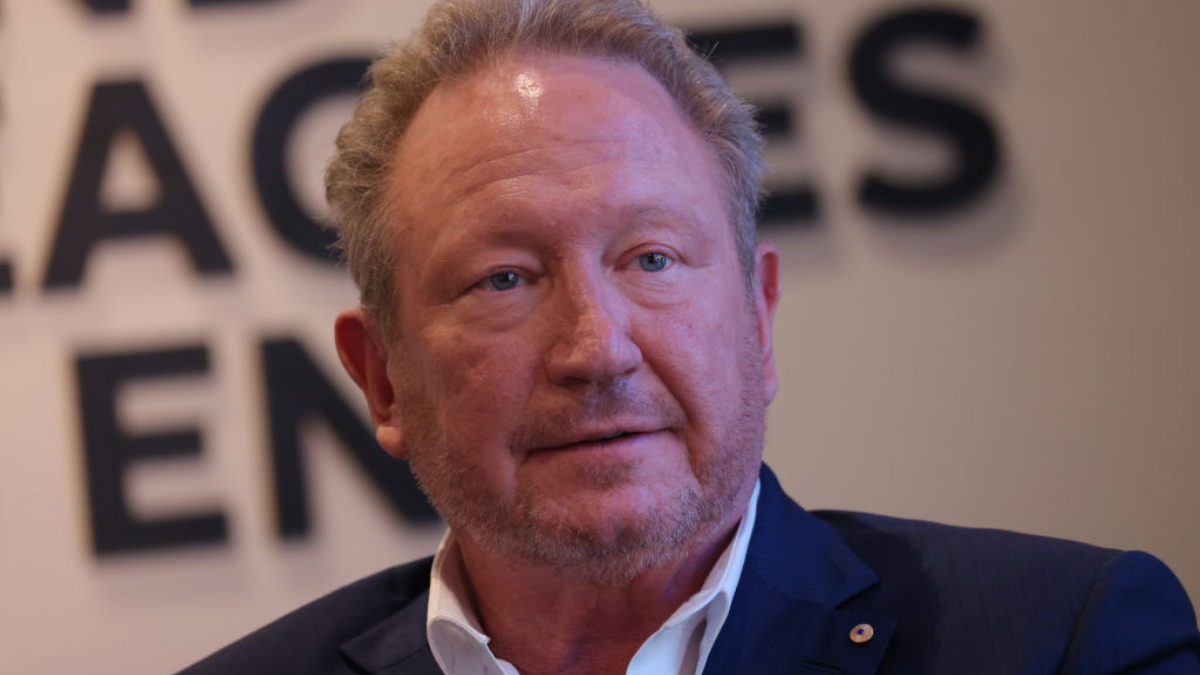Fortescue’s green hole with 700 jobs on the cutting board

Pic: Getty Images
- Fortescue likely to rein in green energy spend after restructure including 700 job losses
- Redundancies come as reports suggest FMG will drop ambitious green hydrogen targets
- Andrew Forrest’s FMG to report June results on July 25
Nearly two years after Andrew Forrest bullishly claimed bankers had valued Fortescue (ASX:FMG) green energy business at US$20 billion, the iron ore major has delivered a dramatic about face, reportedly scrapping plans to produce 15Mt of green hydrogen a year by 2030.
The news came as FMG delivered plans to drop 700 jobs yesterday, buried in a statement lodged late in the ASX trading day on a corporate restructure and promotions for a string of senior executives including now permanent and formerly acting CFO April Paget.
But the real news was lost on virtually no one.
Forrest, who after relinquishing day to day management of Fortescue in 2011 went on to obtain a doctorate in marine ecology at UWA, had returned as executive chairman and ensconced the Pilbara iron ore producer in his personal brand since taking on a new guise as a green energy activist after the Pandemic.
But the tumultuous period also saw a cascade of executive churn that underlay the near constant flux in its strategy.
Yesterday’s flagged redundancies were about leanness and agility, according to the $69bn ASX 20 company.
“Fortescue remains resolute in its commitment to be the world’s leading green technology, energy and metals company with a laser focus on achieving Real Zero by 2030. The Company has undergone a period of rapid growth and transition, and as part of bringing together Metals and Energy into One Fortescue, initiatives are being implemented to simplify its structure, remove duplication and deliver cost efficiencies,” it said.
“The Company must continually evolve to ensure it remains lean, is best positioned to deliver on its strategy and generate the maximum value for shareholders. As part of this, approximately 700 people from across Fortescue’s global operations will be offered redundancies, with that process to be finalised by the end of July 2024. Fortescue is grateful for the contribution of all those impacted by these changes.
“The streamlined One Fortescue team will be reflective of Fortescue’s Board, compromising of nearly 50 per cent women. Diversity will continue to be a key measure of our performance, with new targets implemented to drive diversity across the business.”
Green energy questions
FMG is set to report its June quarter results on July 25 – Thursday next week.
But already it is shaping to be more than the usual quarterly update, with focus also to fall on its iron ore exports after a weak March quarter impacted by weather and a train derailment.
Having already guided to the lower end of its 192-197Mt range this year and cut the production expectations from its Iron Bridge mine for FY24 from up to 7Mt to 2Mt, Visible Alpha consensus in early July suggested FMG would set guidance of 201Mt of iron ore shipments for FY25.
Goldman Sachs, which like many investment banks has a sell rating on FMG, is more pessimistic, predicting it will deliver just 193Mt in the coming financial year.
While FMG will continue with two green hydrogen and electrolyser projects in Phoenix in the US State of Arizona and Gladstone in Queensland, approved last year in a US$750m commitment alongside a green iron pilot in WA, the news today hints that its green energy spend will be reined in.
Goldman Sachs’ Paul Young and Caleb Heiner had flagged in a note in April using estimates based on capex benchmarking from other FMG projects, that larger projects in Norway and Brazil could carry capital costs of US$10-20bn, depending on if they extended to green ammonia and liquefaction facilities.
Forrest issued a later statement yesterday committing to FMG’s plans to decarbonise its iron ore operations completely by 2030, a venture it expects to cost US$6.2bn. BHP and Rio have more conservative 2050 Scope 1 and 2 net zero targets.
His strategy received vindication from the market with FMG shares pushing an all time high $30 in late January, confounding large instos and the scribes of many bearish investment bank price targets, before Chinese economic jitters and steel mill losses began to weigh on the iron ore price.
But its shares are now down 24% YTD.

UNLOCK INSIGHTS
Discover the untold stories of emerging ASX stocks.
Daily news and expert analysis, it's free to subscribe.
By proceeding, you confirm you understand that we handle personal information in accordance with our Privacy Policy.








